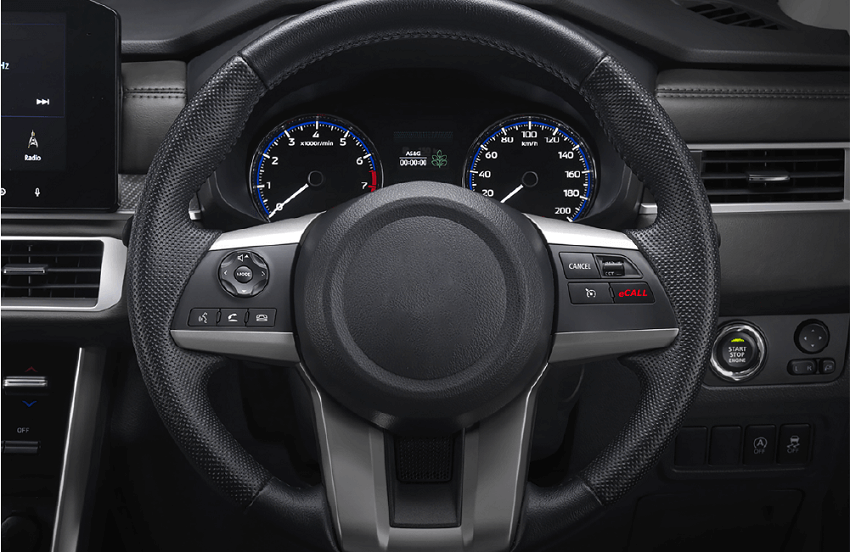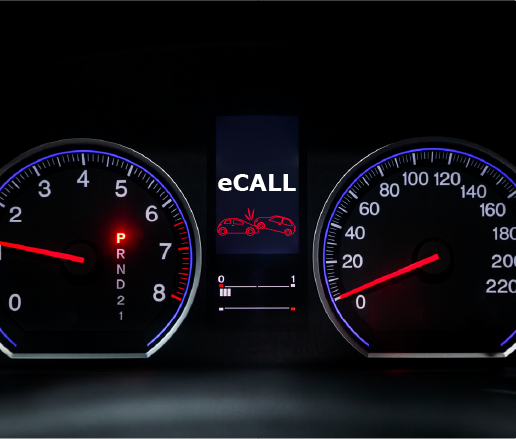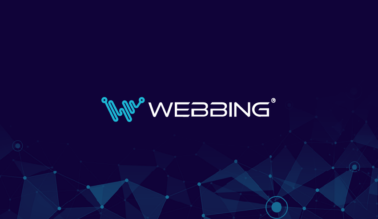How cellular connectivity and eSIM solutions are transforming safety and global deployment for automotive manufacturers
by Per Gadenius
According to a recent report by Transforma Insights, the number of connected cars is projected to reach 1.94 billion by 2033, from 752 million in 2023. Counterpoint research shows that two out of every three cars sold already feature embedded connectivity and this will grow to almost 100% connectivity by the end of the decade. Cellular connectivity is a foundational element driving the evolution of connected cars, enabling a wide range of features that enhance safety, convenience, and efficiency.
Along with infotainment, telematics, and over-the-air updates, connected cars have enhanced safety features, which not only help provide timely information and reduce the risk of accidents, but also enable quick response in emergencies. It is done via an automated emergency call (eCall) function. eCall is generated from a sensor inside the vehicle in case of a serious road accident. The call is made to the nearest emergency-response network, and the system also automatically transmits the data on the direction of travel, coordinates and time of the accident to help the rescue services respond. This function can also be triggered manually. From 31 March 2018, eCall systems became mandatory in the EU in all new types of cars and light commercial vehicles with the possibility of retrofitting in older cars. eCall is also mandatory in Turkey, UAE, South Korea and Russia, while Saudi Arabia plans to enact necessary legislation by 2025 and the Australian government is working on initiatives to enhance emergency call capabilities in vehicles, including automatic crash notification systems.

In the context of connectivity, there are several challenges that automotive manufacturers may face when deploying eCall systems.
While cellular connectivity is the cornerstone of the whole connected cars concept, the implementation of wireless connectivity in cars is not as easy as it may seem, both technically and conceptually. As cellular technology is constantly evolving, the life cycle of a certain network topology or solution may be significantly shorter than the life cycle of a car, which usually is 15 years or longer. This fast-paced evolution brings network upgrades that may lead to legacy network shutdowns like the ongoing 2G and 3G sunsets, which either leave vehicle fleets disconnected or require expensive adjustments in the cars.
Also, when it comes to eCall or other safety features that require connectivity, it is important to understand that it’s car manufacturers who are solely responsible for ensuring their vehicles are safe to use under all circumstances. For mobile network operators, the quality of service may vary due to many factors, from network congestion to weather conditions, and they don’t have any commitments in that regard.
Trying to ensure stable connectivity and higher service quality, many automotive companies chose to use more than one SIM in their vehicles, such as “dual-SIM dual active” (DSDA) configuration, where the eCall system would use a dedicated SIM that would not transmit any infotainment data. A real breakthrough came with the emergence of eSIM and a remote provisioning mechanism that allows to use multiple carriers’ profiles and switch between them. In a recent study by GSMA Intelligence, the automotive industry is named as a frontrunner in the adoption of eSIM technology for IoT applications, and eCall functionalities are considered a major driver of eSIM deployments in the automotive sector.

Connectivity Requirements
It’s hard to pick a connectivity feature that would be less important than the others when talking about safety in connected cars. However, let’s look at some requirements that are most essential in relation to eCall.
Latency
Latency is crucial for obvious reasons. An eCall system needs to transmit information quickly to emergency services so they can respond promptly. Any delays in this data transmission can hinder the effectiveness of emergency response. The overall effectiveness of eCall depends on having a reliable and low-latency connection to mobile networks, and high latency, especially in areas with poor connectivity, can lead to failed or delayed communications.
It is worth noting though that while cellular networks generally provide an acceptable level of latency for mission-critical communications, actual latency depends on your connectivity provider’s core network infrastructure.
Coverage
Ensuring reliable mobile network coverage, especially in remote or rural areas, is essential for eCall functionality. Losing connectivity may significantly reduce the level of safety. Weak cellular range is still considered to be one of the biggest connectivity challenges today. Even though cellular connectivity is the best option for vehicles for its ubiquitous reach and global viability, each operator’s network inevitably has its weak spots.
Solving coverage issues could be a serious challenge for OEMs that ship connected cars to multiple markets. Getting continuous coverage in every region would require contracting with several mobile operators and physically changing SIMs, which is often impossible due to logistics and technical reasons. With the emergence of eSIM and its remote provisioning capabilities the latter problem was somewhat alleviated, but ensuring that the vehicle remains connected wherever it goes remains a pain point for car manufacturers.
Compliance with Regulations
While eCall requirements are common for all EU members and oftentimes are aligned with emergency call systems used in other states, different countries may have varying standards and regulations. Ensuring that the eCall system meets all regulatory requirements across different markets can be quite complex and demanding.
For example, in Turkey, upon implementation of restrictions on data sovereignty that stipulated connected cars carry local SIMs and store all relevant data in the country, automotive manufacturers faced problems with the vehicles already shipped to the country and had to shut down some eCall services so as not to fall under the scope of the regulation. At the same time, they couldn’t import newer cars subject to the regulation as they already had foreign SIMs. For others, including device manufacturers and connectivity operators, it meant that now every deployment would have to comply with a number of new requirements, which, in turn, would demand suitable connectivity solutions.
Future-Proof Connectivity
At the time when the EU Regulations on eCall were first developed, 2G and 3G mobile phone networks were in common use across the European Union and, hence, the EU Regulations required the fitment of eCall systems designed to operate over 2G/3G networks, as they were in common use in Europe at the time. Since 4G and 5G networks have become commonplace and many European countries switching off their 2G and 3G networks, an updated EU regulation requires mandatory fitment of 4G/5G compatible eCall systems for all new M1 and N1 category vehicles from January 1, 2027. Experts say that currently, more than 96% of connected cars are powered by 4G, but by 2030, almost 90% of cars sold will have 5G connectivity.
As mobile network technologies evolve, eCall systems must be compatible with new standards to ensure optimal performance and reliability. Aside from network updates, future enhancements may involve transmitting more data, such as advanced vehicle telemetry or security enhancements. In these circumstances, manufacturers that deploy eCall systems need a connectivity solution that is future-proof and capable of adapting to these growing needs.

Webbing Solution
Webbing offers a connectivity solution that ensures global access to reliable and high-quality internet, with low latency and the best of class coverage. It provides secure and continuous internet connection, delivering a streamlined, centralized, and scalable means of deploying, controlling and monitoring connected car fleets.
As a global MVNO, Webbing’s network of 600+ mobile operators guarantee world-wide coverage. It allows to roam on several carriers’ network in every region, solving the problem of weak spots that any mobile network may have and ensuring full coverage and continuous connectivity even at remote locations.
Webbing’s distributed core network with local breakouts, multiple network solution, and data server redundancy can provide OEMs connectivity stability and low latency. It also allows for all types of localization – from IP traffic that remains in the country to designated profiles for emergency calls, so it’s easy to comply with local and regional connectivity regulation requirements.
Our eSIM solution ensures failover connectivity with the capability of using multiple mobile carrier profiles, easily changing carriers at any time with zero integration, and an option to fall back from a failing profile to a different profile without any need to communicate with a remote server. Webbing’s eSIM is aligned with the GSMA SGP.32 IoT eSIM specification, which means it will be fully compatible with the new standard when it becomes ubiquitous.
Webbing also offers a centralized way to manage eSIMs throughout their lifecycle, making deployments future-proof and eliminating the problem of ever-changing legislation on connectivity and data protection. With our solutions, OEMs can set up business rules that would allow connected cars to change the serving carrier automatically under specific conditions, such as location, loss of connectivity or even after a certain amount of time, which can be of use for cars shipped to some markets.
Our solutions help car manufacturers overcome their connectivity problems and reduce time to market for global deployments, providing the benefits of roaming with multiple carrier options in every country, and seamless transition between carriers, while maintaining low rates and low latency on a global scale.
Reach out to learn more about our connectivity solutions.




